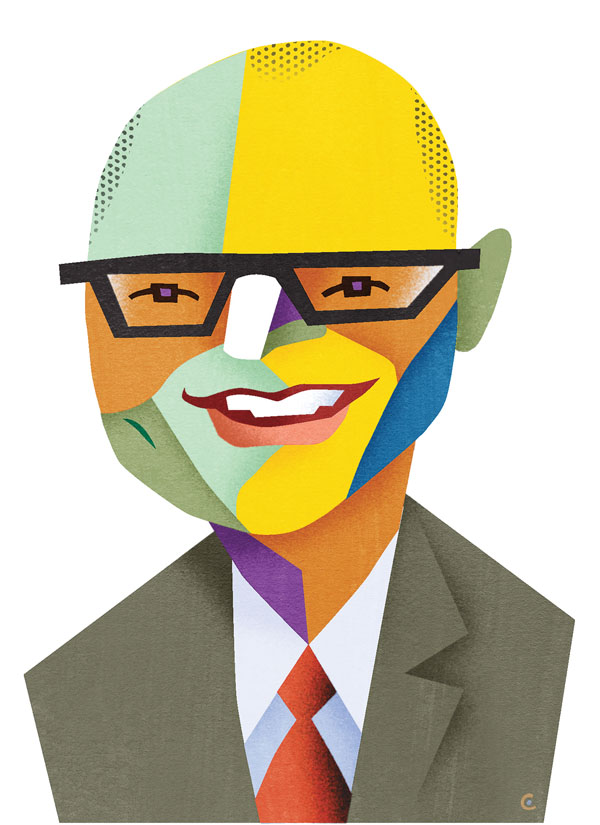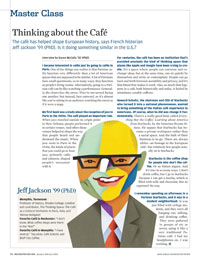Master Class
I became interested in cafés just by going to cafés in Paris. One of the things you realize is that Parisian cafés function very differently than a lot of American spaces that are supposed to be similar. A lot of Parisians have small apartments, so in many ways, they function as people’s living rooms. Alternatively, going to a Parisian café can be like watching a performance. Generally, the chairs face the street. They’re not turned facing one another, but instead, face outward, so it’s almost like you’re sitting in an audience watching the street as if it were a stage.
 (Illustration: David Cowles)
(Illustration: David Cowles)My first book was a study about the reception of jazz in Paris in the 1920s. The café played an important role. When jazz traveled outside its origin point in New Orleans, people performed it in certain venues. And often those venues helped to shape the way that people heard and understood the music. When jazz went to Paris in the 1920s, the kinds of places that you could go to hear jazz, primarily cafés and cabarets, shaped people’s encounter with it.
For centuries, the café has been an institution that’s provided precisely the kind of thinking space that places like Apple and Google have been trying to create. It’s a space where people can converse and exchange ideas, but at the same time, can sit quietly by themselves and write or contemplate. People can go back and forth between sociability and privacy, and it’s that blend that makes it work. Also, so much that happens in a café, both historically and today, is fueled by stimulants, notably caffeine.
Jeff Jackson ’99 (PhD)
Memphis, Tennessee
Professor of history, Rhodes College; coeditor and contributor, The Thinking Space: The Café as a Cultural Institution in Paris, Italy, and Vienna (Ashgate)
Favorite Café in Rochester: “I don’t know. What coffee shops were there in the ’90s?”
Favorite Café in Memphis: “I have several.” Top picks: Café Eclectic and Bluff City Coffee.
Howard Schultz, the chairman and CEO of Starbucks who turned it into a national phenomenon, wanted to bring something of the Italian café experience to Americans. Of course, what he did was change it fundamentally. There’s a really good book called Everything But the Coffee: Learning about America from Starbucks, by the historian Bryant Simon. He argues that Starbucks has become a private workspace rather than a social space. And the bulk of their business is to-go. There are always tables—an homage to the European café—but relatively few people actually sit in Starbucks.
Starbucks is the coffee shop for people who don’t like coffee. Or so Simon argues. And it’s true in so many ways. I don’t drink coffee, but I go to Starbucks because I can get a mocha, which is filled with milk and chocolate. But an espresso? No way.
I remember spending an afternoon in a Parisian Starbucks, and it was in a student neighborhood. It was just filled with college students, and they were all hanging out, talking, and drinking coffee. They were gathered in groups of six or seven, using it like a very traditional Parisian café. I had my headphones on. I was working.

